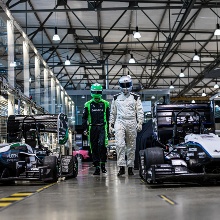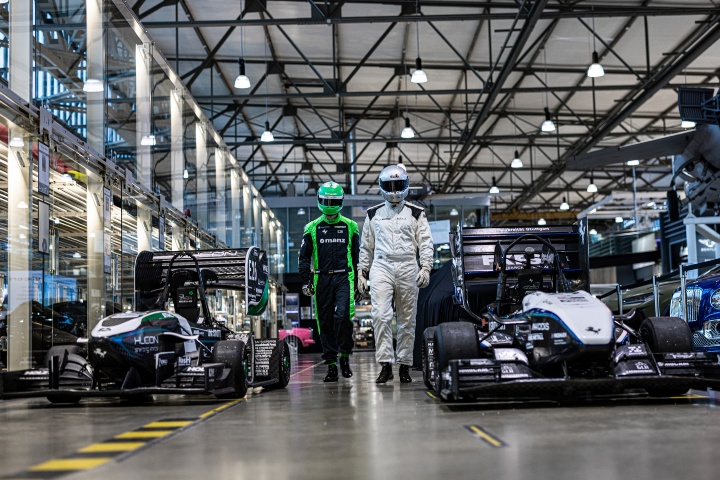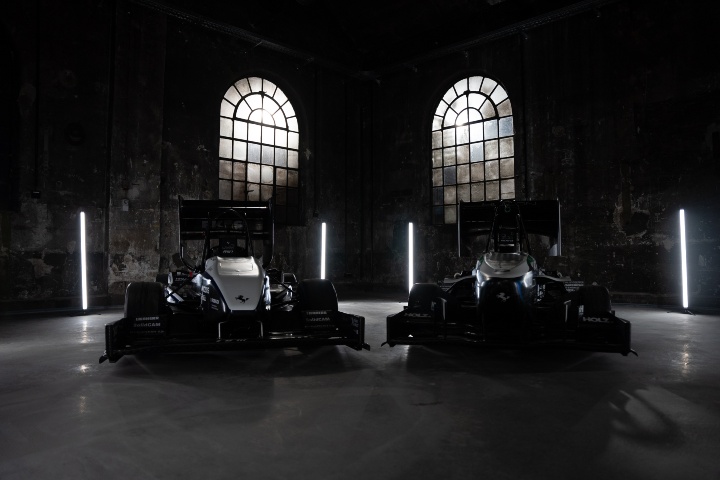Technology is changing not only on the road, but also on the racetrack. Until recently, two university groups from the University of Stuttgart competed in Formula Student, the largest student competition for motor sports, namely the racing team and the GreenTeam. Now they compete under a joint banner with an electric motor under the hood in national and international competitions against university groups from all over the world. In an interview, Joachim Hecker, Technical Director, and Selina Krüger, Head of Management, elaborate on how the merger streamlines processes, the challenges they've surmounted, and the successes they hope to accomplish in the current season.
The racing team and the GreenTeam were previously two independent clubs. Why did you decide to join to form one racing team?
Selina Krüger: As of this season, Formula Student Germany, the FSG, no longer allows racing cars with combustion engines on the grid. And because the FSG is the best event and is held in Germany, the idea came about for the two teams to merge into one.
Joachim Hecker: Originally, the combustion engine category was the much larger category. But in the last few years, the whole competition has shifted more and more towards electric. Last year, 30 combustion and 70 electric cars were launched at FSG. And that's why we decided to pool our resources and form one team.
What challenges are associated with the transition to electric drive?
JH: Many of the active team members come from the GreenTeam. So at least as far as the technology is concerned, not everything is new to us. The current challenge lies in effectively orchestrating the merger of both teams. Legally merging two separate clubs into one is something new for us.
What will be made easier by the merger? And might it even open up new opportunities for you?
JH: Both teams have become smaller and smaller in recent years, and it has become increasingly difficult to build a good vehicle with so few people. Now we are more students all moving in the same direction and not taking sponsors or rooms away from each other. That was often a problem in the past. You're in the same building, share a kitchen and compete for sponsors, so there was friction from time to time. That's much easier now.
And how successful has the process been so far? Has the merger been rewarding?
JH: We have certainly benefited from the fact that both teams have joined forces to form one racing team. We can bundle the sponsors of both teams without experiencing any major losses and it has been possible to maintain the team's strong performance. We also have more space in the premises now, which is much more relaxed. It used to be a bit cramped in here from time to time.
SK: I have the feeling that more progress is being made now. We've engaged in extensive discussions with alumni from previous teams. While their experiences may overlap, they also offer varying perspectives on the same topics. Valuing diverse viewpoints is crucial, but it's equally important to approach things with a fresh perspective, rather than merely replicating the actions of previous teams. We are now trying out new things and developing the project further.
What are your plans for this season?
JH: We want to win two events. This is feasible given the conditions present here in Stuttgart. There will also be more happening in vehicle development this year. But we will tell you more about this in our rollout in May.
How can people join the team? And who can join?
SK: There are various ways of getting involved. For example, in management, in the organization of events, in recruiting or in public relations on our social media channels. You don't have to study anything technical for that. However, anyone interested in gaining technical insights can contribute to chassis development or production.
JH: The most important thing is that you enjoy it and are motivated, and perhaps also have a passion for motorsport and technology. We welcome anyone who shows enthusiasm for what we do. If you're in your first or second semester, you may not be able to take on as much responsibility due to your current level of knowledge and experience. Nevertheless, anyone can drop by and help.
| Contact | If you would like to join the racing team, you can contact the students directly by email or Instagram direct message. |
|---|

Jacqueline Gehrke
Online Editor




